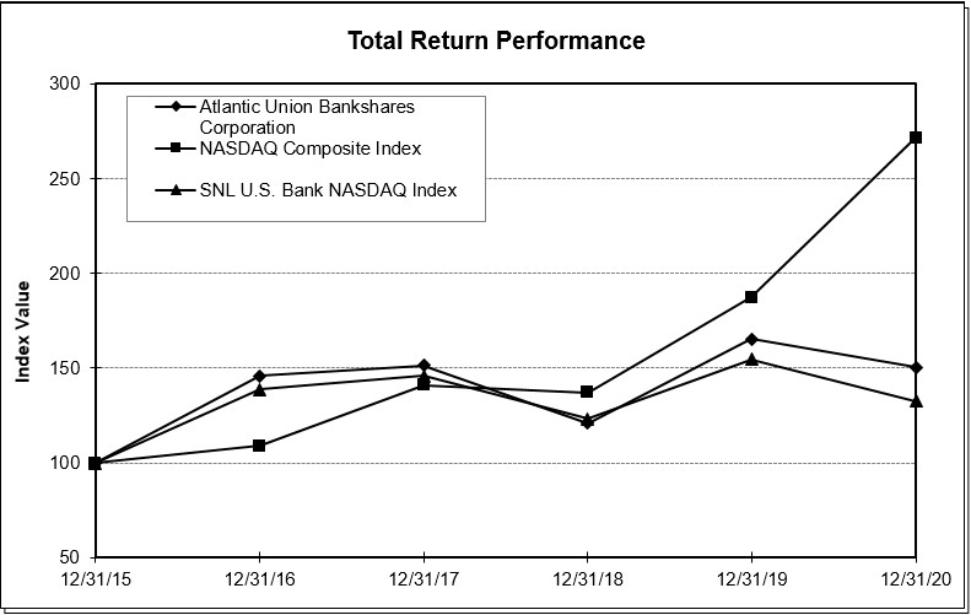Additionally, on October 22, 2019, the Bank announced a new division of the Bank, Atlantic Union Equipment Finance, which provides equipment financing to commercial and corporate customers. This business includes providing financing for a wide array of equipment types, including marine, tractors, trailers, buses, construction, manufacturing and medical, among others. Effective January 1, 2020, the Bank transferred this equipment finance business to Atlantic Union Equipment Finance, Inc., a wholly-owned subsidiary of the Bank.
SEGMENTS
The Company has one reportable segment: its traditional full-service community banking business. For more financial data and other information about the Company’s operating segment, refer to Note 19 “Segment Reporting & Discontinued Operations” in the “Notes to Consolidated Financial Statements” contained in Item 8 of this Form 10-K.
Effective May 23, 2018, the Bank began winding down the operations of UMG, the reportable mortgage segment. The decision to exit the UMG mortgage business was based on a number of strategic priorities and other factors, including the additional investment in the business required to achieve the necessary scale to be competitive.
EXPANSION AND STRATEGIC ACQUISITIONS
The Company expands its market area and increases its market share through organic growth (internal growth and de novo expansion) and strategic acquisitions. Strategic acquisitions by the Company to date have included whole bank acquisitions, branch and deposit acquisitions, purchases of existing branches from other banks, and registered investment advisory firms. The Company generally considers acquisitions of companies in strong growth markets or with unique products or services that will benefit the entire organization. Targeted acquisitions are priced to be economically feasible with expected minimal short-term drag to achieve positive long-term benefits. These acquisitions may be paid for in the form of cash, stock, debt, or a combination thereof. The amount and type of consideration and deal charges paid could have a short-term dilutive effect on the Company’s earnings per share or book value. However, management anticipates that the cost savings and revenue enhancements in such transactions will provide long-term economic benefit to the Company.
On May 31, 2016, the Bank acquired ODCM, which currently operates as a stand-alone direct subsidiary of the Bank from its offices in Charlottesville and Alexandria, Virginia. On July 1, 2018, ODCM completed its acquisition of OAL, a McLean, Virginia based investment advisory firm. Together, ODCM and OAL have an aggregate of approximately $876.1 million in assets under management at December 31, 2020.
On January 1, 2018, the Company acquired Xenith, pursuant to the terms and conditions of the Merger Agreement dated May 19, 2017. Pursuant to the Merger Agreement, Xenith’s common shareholders received 0.9354 shares of the Company’s common stock in exchange for each share of Xenith’s common stock, resulting in the Company issuing 21,922,077 shares of common stock. As a result of the transaction, Xenith Bank, Xenith’s wholly-owned bank subsidiary, was merged with and into the Bank.
On April 1, 2018, the Bank completed its acquisition of DHFB, a Roanoke, Virginia based investment advisory firm with approximately $627.3 million in assets under management at December 31, 2020.
On February 1, 2019, the Company acquired Access, pursuant to the Agreement and Plan of Reorganization dated as of October 4, 2018, as amended December 7, 2018, including a related Plan of Merger (the "Merger Agreement"). Pursuant to the Merger Agreement, Access’s common shareholders received 0.75 shares of the Company’s common stock in exchange for each share of Access’s common stock, with cash paid in lieu of fractional shares, resulting in the Company issuing 15,842,026 shares of common stock. In connection with the transaction, Access National Bank, Access’s wholly-owned bank subsidiary, was merged with and into the Bank.
